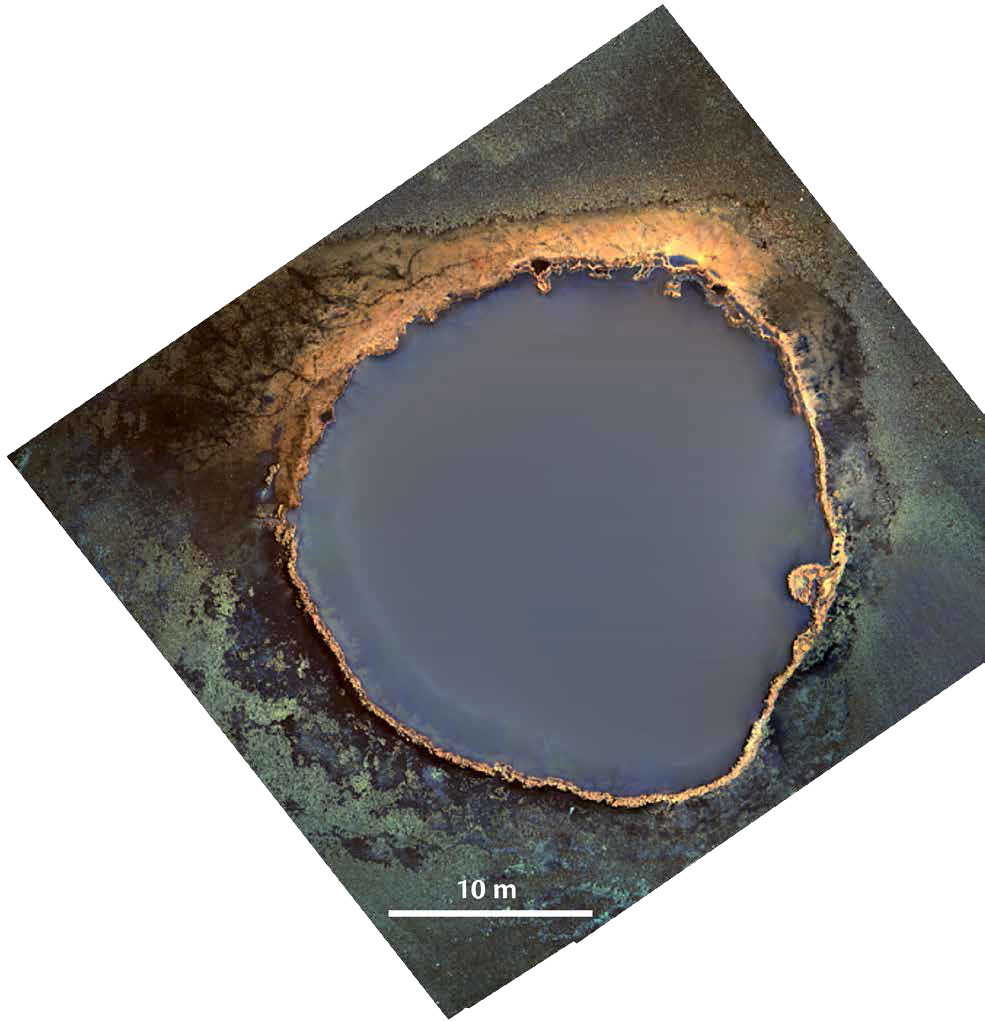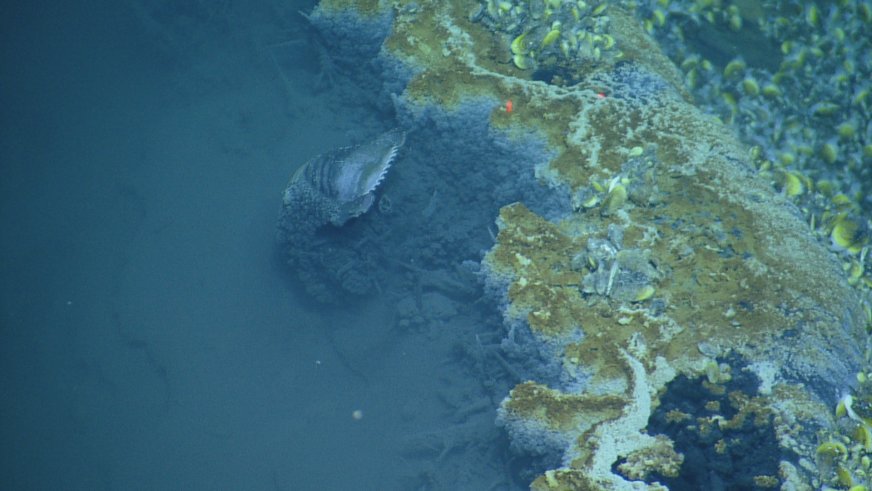At the bottom of the Gulf of Mexico found a poisonous lake

At the underwater salt lake of Despair Jacuzzi - own coastline
In 2014, at the bottom of the Gulf of Mexico, they discovered a strange pool of over-salted dense water. Bubbles of methane and hydrogen sulfide rise from the bottom, and poisonous water quickly kills any animal that had the imprudence to swim here. The main victims are crabs, bokoplavy and rare fish. The lake was called the Jacuzzi of Despair (Jacuzzi of Despair).
Such pools on the ocean floor are called underwater salt lakes . These are large areas of super-saline water, where the salt concentration is 4–5 times higher than in the surrounding sea water. The difference in salinity leads to a difference in density, which prevents the waters from mixing. As a result, the underwater reservoir has its own coastline and a clear boundary of the section, like a real land lake.

Photo collage Jacuzzi Despair in the Gulf of Mexico is made up of about 2000 photos. Photo: Oceanography, vol. 29, no. 1, supplement
')
Underwater salt lakes are common in the Gulf of Mexico . The fact is that in the Jurassic period this shallow bay was cut off from the world ocean and dried out, because of which a layer of salts and minerals up to 8 km thick was formed there. When the Gulf of Mexico re-filled with water, the salt deposits gradually became covered with bottom sediments. These sediments became so heavy over time that they began to deform the layer of salt deposits. Mostly formed cracks, pits and hills. And in those places where salt deposits make their way through the deposits, a saturated salt solution is formed, which flows into puddles and lakes.
So the finding of the ship E / V Nautilus is not unique, although such a rich mineralization of the coastline is rare. This area, similar to a salt lake, was noticed recently during a cartographic survey of the area. The ship went there for reconnaissance from the port in New Orleans.
The opened picture turned out to be truly amazing. A round lake with a diameter of about 30 m and a depth of about 4 m is located at a depth of almost 1 km.
In the cauldron of dense water various toxic chemicals are formed, which for the time being cannot leave it. Including methane and hydrogen sulfide. Some researchers even suggest that the toxic emissions from such underwater lakes have something to do with the disappearance of numerous ships in the Bermuda Triangle . It is experimentally confirmed that the possibility of sufficiently fast (within tens of seconds) flooding of a vessel that was at the boundary of methane release if gas is released by one bubble, the size of which is greater than or equal to the length of the vessel, is indeed confirmed .

Special mineralization at the edge of the underwater salt lake creates an excellent picture of the coastline.

On the shore of the lake, scientists discovered giant corals with symbiotic bacteria, as well as specialized shrimps and tubular worms adapted to life in such an ecosystem.
The temperature in the underwater lake is 18 ° C, which is much more comfortable than 4 ° C in the surrounding ocean.

Underwater salt lake surrounded by chemosynthetic organics of mollusks with bacteria that feed on methane
The submarine ship E / V Nautilus spent some time watching the sea animals near the lake. Local crabs very carefully approached the edge, after which poisonous water begins. It looks like they are aware of the danger.

However, not everyone knows the rules. The researchers nevertheless waited until one of the isopods crawled close enough to the edge of the lake and touched it. This allowed to visually observe the boundary between the two water basins.

"This is one of the most amazing places in the underwater world," says Associate Professor Erik Cordes from the Department of Biology at Temple University (USA), who, together with his colleagues, discovered a salt lake on underwater maps and published an article in the journal Oceanography . “You go down to the bottom of the ocean and see a lake or a flowing river.” It feels like I got to another planet. ”
The lake was discovered in 2014 using the Hercules remote descent vehicle. Then, for more detailed research, scientists descended here in person on the ship E / V Nautilus.
The discovery is described in the March issue of the journal Oceanography ( vol. 29, no. 1, supplement , pp. 30–32) and on the website of the research ship E / V Nautilus.
Organisms that have adapted to feed on methane under the conditions of an almost total lack of oxygen in super-saline water can be better prepared for the colonization of the planets in the solar system, scientists believe. Several living organisms were taken from the coast of the salt lake for analysis. “Many see these extreme creatures as models of what we can find on other planets,” said Cordes.
Source: https://habr.com/ru/post/398785/
All Articles